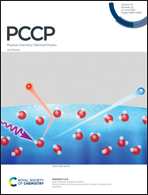Pressure-induced evolution in the durability of nickel–metal hydride batteries under high-current charge
Abstract
We found that an AAA-type battery (min. 750 mAh) pressurized with Ar or N2 at pressures of up to 5 MPa exhibited a significant durability enhancement even under high-current conditions. As an example of a charge–discharge cycle test at 3 amperes, the residual ratio of capacity at atmospheric pressure decreased to approximately 90% of the standard capacity before 50 cycles. However, at a pressure of 3 MPa of N2, the capacity remained at more than 90% until 180 cycles. With an increase in the pressure, the residual ratio of capacity was further improved. It has been considered that, at the positive electrode of the Ni–MH battery, the chemical reaction from nickel(II) hydroxide (Ni(OH)2) crystals to nickel oxide hydroxide (NiOOH) crystals occurs during the charging process. However, X-ray diffraction (XRD) results in the present study do not support this solid–solid reaction between these two types of crystal. To address this contradiction, we propose a different reaction mechanism by introducing the concept of non-crystalline fine particles of compounds, which are undetected by XRD. This mechanism clearly explains how the pressure affects the durability improvement. Pressurized batteries, which are capable of fast charge–discharge operation under high-current conditions, can provide a new route for application fields of unconventional energy storage.



 Please wait while we load your content...
Please wait while we load your content...